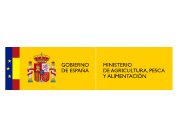Miniatures in danger: improving the knowledge of protected bryophytes and protection catalogs (BRYOS).
MITECO
The bryophytes are a group of plants that includes mosses and liverworts, belonging to one of the oldest lineages of life on the earth’s surface. Although they are not well known to the general public, Spain is home to some 1,260 species of bryophytes, which account for 59% of the European flora. In addition, our country is home to 63 species that are exclusive on a European or world scale. In addition, these plants have a crucial relevance in ecosystems, being great fixers of atmospheric CO2, regulating the availability of water, reducing erosive processes in soils and generating habitats for an infinite number of invertebrates, bacteria and fungi. However, they are very sensitive to habitat modifications, which hinders their conservation.
The BRYOS project has worked on improving the information on protected bryophytes, whose actual conservation status is questionable due to the scarcity of information on them. Thus, the proposed actions have contributed to increase the quality of the sexennial evaluations, including both search surveys and demographic studies as well as taxonomic revisions necessary to establish the actual presence and extent of taxa.
This study also includes the elaboration of a proposal for the extension of national protection catalogues.
national protection catalogs (List of Wildlife Species
(List of Wild Species under Special Protection Regime and Spanish Catalog of Threatened Species), in which bryophytes are underrepresented, according to the University of Valencia. This proposal was based on the compilation of existing information and its evaluation by experts, in the appropriate form and manner to initiate the procedures foreseen in the Natural Heritage and Biodiversity Law and the published guiding criteria.
The overall objective of the project has been to improve the knowledge of protected bryophyte populations and to improve the legal protection of threatened bryophytes.
The specific objectives were as follows:
- Verify the current presence of Bruchia vogesiaca and Solenostoma handelii in Spain.
- To establish if there is a population decline of Sphagnum pylaesii.
- To establish the correct identity of the populations so far attributed to Sphagnum magellanicum.
- To establish the correct identity of the populations attributed to the genus Leucobryum in the Canary Islands.
- Clarify the presence of Marsupella profunda in Spain.
- To investigate the presence of cryptic species in the different populations of Hamatocaulis vernicosus in Spain.
- Improve the legal protection of threatened bryophyte species in Spain.
- Field surveys to locate populations of Bruchia vogesiaca and Solenostoma handelii.
- Demographic study of Sphagnum pylaesii in A Coruña, Lugo and Asturias.
- Reviews of herbarium material to verify the Spanish material previously identified as Sphagnum magellanicum and to assess its ascription to S. medium or S. divinum and to identify to which species the Canary Island populations of the genus Leucobryum correspond, among other objectives.
- Molecular analysis of herbarium material from Spanish and Pyrenean samples.
- Preparation of a proposal for the inclusion of species in the LESRPE and CEEA lists, compiling available information on the distribution and population status of 40 endangered bryophyte species.
- Dissemination and communication of the project to the scientific community and society in general, through the publication of scientific articles, participation in congresses and dissemination actions in social networks.
In general, the project has contributed to increase the knowledge about protected bryophytes in Spain and to improve the sexennial assessments for the Habitat Directive. Field surveys have been carried out to review the records of the species Bruchia vogesiaca, having identified its presence in Galicia after 93 years.
In addition, 7 populations of Sphagnum pylaesii have been located in 12 of the 16 known localities, and material from Spanish herbarium collections of Sphagnum magellanicum has been reviewed to assess its ascription to S. medium or S. divinum. We have also reviewed the Canary Islands sheets of the genus Leucobryum, identifying all specimens as
Leucobryum juniperoideum
but one of them, so it is proposed to replace Leucobryum albidum by L. juniperoideum in the Canarian biodiversity database (BIOTA).
Molecular analyses have also been carried out on 13 Spanish and 4 French Pyrenean specimens of
Hamatocaulis vernicosus
to establish its distribution, detecting only one cryptospecies and 2 haplotypes in Spanish territory, so it is recommended to lower the threat level of this species to “Vulnerable”.
Finally, a proposal for the inclusion of 40 taxa in the national protection catalogs has been prepared following the necessary criteria. The autonomous communities where the number of species to be protected will increase the most are Andalusia and the Canary Islands, which will increase from 1 and 2 protected bryophytes to 12 and 17, respectively.
All these research works have been completed with communication actions towards the scientific community with the preparation of 3 scientific articles, and the attendance and realization of oral communications at congresses, as well as towards society in general through social networks and the BRYOS project blog.


Miniatures in danger: improving the knowledge of protected bryophytes and protection catalogs (BRYOS).









 back to search
back to search 